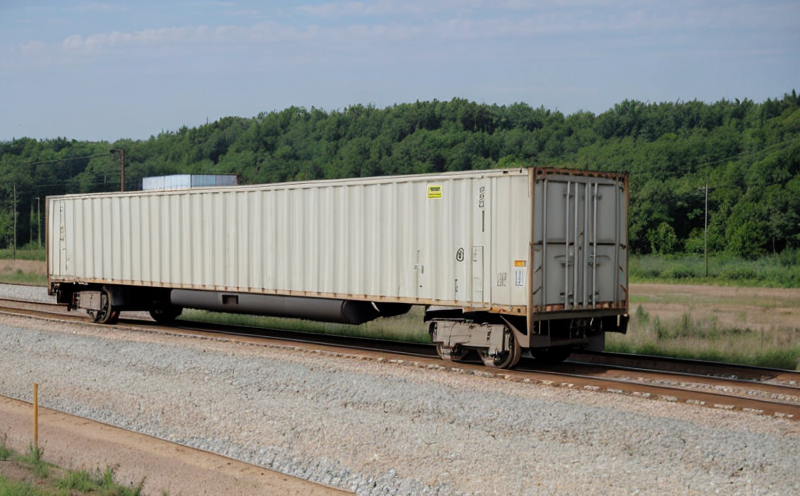EN 12663-4 Static Load Testing of Wagon Structures
The EN 12663-4 standard specifies a method for determining the static load capacity and structural integrity of railway wagons. This test is crucial in ensuring that freight wagons can safely carry heavy cargo without compromising their structural soundness or posing risks to safety during transportation.
Static load testing involves subjecting a wagon structure to specified loads in controlled conditions, typically using hydraulic loading systems capable of applying vertical and lateral forces. The goal is to assess the performance of the wagon under static stress conditions that mimic real-world scenarios such as cargo loading and unloading activities at various railway stations.
The process begins with careful preparation of the specimen (the wagon structure). This includes cleaning, inspecting for any visible damage or defects, and ensuring all components are in optimal condition. The test setup must replicate actual operational conditions as closely as possible to yield meaningful results.
Once prepared, the wagon is positioned on a suitable static load testing rig designed to apply controlled loads. Load application follows strict protocols outlined in EN 12663-4, which dictate specific loading rates and incremental increases to reach predetermined maximum loads. Sensors and strain gauges are strategically placed throughout the structure to monitor deformation and stress distribution during the test.
Data collection is continuous throughout the testing process. Engineers use sophisticated software tools to analyze readings from sensors installed on key areas of the wagon, including axles, frames, couplers, and other critical components. These analyses help determine whether the wagon meets the required static load capacity according to EN 12663-4 specifications.
After completion of the test cycle, engineers evaluate all collected data against predefined criteria set forth by the standard. If a wagon passes this stringent evaluation, it can be certified as compliant with EN 12663-4 requirements, thereby ensuring its suitability for use in commercial freight operations across Europe and beyond.
Static load testing plays a vital role in maintaining high standards of safety within the railway industry by providing objective evidence supporting claims regarding wagon strength and reliability. It also contributes significantly to reducing potential risks associated with structural failures due to overloading or improper design.
Benefits
- Ensures compliance with international standards (EN 12663-4), enhancing credibility and reliability for your products.
- Aids in identifying potential weaknesses early on, allowing for necessary modifications before full-scale deployment.
- Improves overall safety by verifying that wagons can handle specified static loads without compromising structural integrity.
- Promotes consistency across different models and batches of wagons, ensuring uniform quality throughout production runs.
By incorporating EN 12663-4 static load testing into your manufacturing process, you demonstrate a commitment to excellence in product design and safety. This not only strengthens customer trust but also opens up new market opportunities domestically and internationally.
Why Choose This Test?
- This test is essential for ensuring that railway wagons meet stringent European standards, thereby enhancing their safety and reliability in daily operations.
- It provides valuable insights into the structural behavior of wagons under static load conditions, helping manufacturers identify areas needing improvement.
- The results from this testing procedure can be used to negotiate better terms with insurance providers or regulatory bodies due to increased confidence in product quality.
- Performing EN 12663-4 compliant tests demonstrates your company's adherence to global best practices, which is increasingly important as international trade grows more competitive.
In summary, choosing static load testing aligns with broader goals of innovation and continuous improvement within the railway industry. It helps establish a reputation for quality assurance that resonates positively among stakeholders from various sectors including procurement teams, R&D departments, and quality managers alike.
International Acceptance and Recognition
The EN 12663 series of standards is widely recognized throughout Europe and beyond. The static load testing procedure specified in part 4 ensures that railway wagons meet stringent requirements for safety, durability, and performance.
Many countries outside the EU have adopted these standards either directly or through their own regulations based on similar criteria. For instance, several Commonwealth nations follow guidelines closely aligned with EN 12663 due to shared technical specifications and common operational practices within the railway sector.
The acceptance of this test extends beyond mere compliance; it represents an endorsement of best practices in structural engineering applied specifically to railway transport systems. This widespread recognition underscores its importance as a benchmark for quality assurance across international boundaries.





